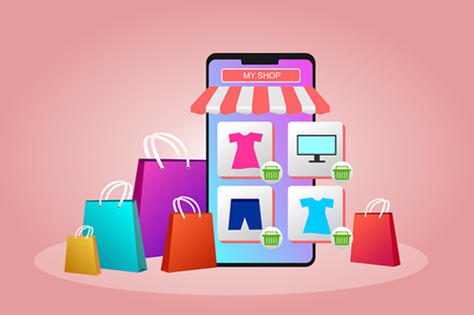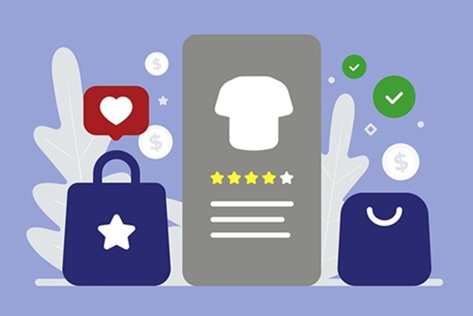The world of e-commerce web design is evolving at a rapid pace, driven by changing consumer expectations and technological advancements. Businesses must stay ahead by adopting new website design trends that enhance user experience, boost conversions and set them apart from competitors. In 2025, e-commerce website design is shifting toward immersive experiences, AI-driven personalization and frictionless shopping journeys.
In this post, we will explore the latest e-commerce design trends that are shaping the future of online shopping and how businesses can implement them to improve their digital presence.
The shift from traditional to modern E-commerce design
In the early days of e-commerce web development, websites were primarily static, featuring basic product listings and text-heavy pages. As mobile commerce gained popularity, businesses shifted to responsive web design to ensure seamless browsing on smartphones and tablets.
Read more on the importance of mobile-first design in the smartphone era.
Today, the focus is on user experience (UX) and conversion rate optimization (CRO). Modern e-commerce websites leverage AI-driven features, interactive product displays and advanced payment solutions to create a frictionless shopping experience.
Key E-commerce web design trends in 2025
1. Immersive shopping experiences

One of the most exciting developments in e-commerce design is the rise of immersive shopping experiences powered by augmented reality (AR) and virtual reality (VR). These technologies allow customers to visualize products in real-life environments before making a purchase. For example,
- AR product previews enable users to see how furniture fits in their home.
- Virtual try-ons allow customers to test makeup, eyewear and clothing digitally.
- Retailers like IKEA and Sephora have successfully integrated AR shopping features to enhance engagement and reduce returns.
2. AI-driven personalization
Artificial intelligence is revolutionizing e-commerce website design by enabling personalized shopping experiences. AI analyzes customer behaviour, past purchases and browsing history to deliver custom product recommendations.
- AI chatbots act as virtual shopping assistants, providing real-time support.
- Machine learning algorithms predict what customers might be interested in.
- Businesses that leverage AI in e-commerce see higher engagement and increased conversions.
Amazon and Netflix have set the benchmark for AI-driven personalization, inspiring smaller brands to integrate AI into their e-commerce platforms.
3. Voice commerce and conversational interfaces
With the rise of smart speakers like Amazon Alexa and Google Assistant, voice commerce is becoming a major trend in e-commerce development. More consumers are using voice search for online shopping, prompting businesses to optimize their websites for voice searches.
To adapt, e-commerce businesses should:
- Optimize product descriptions with natural, conversational language.
- Implement voice-enabled search functionality.
- Ensure fast-loading pages, as voice searches favour speed and efficiency.
4. Headless commerce and API-driven design
Traditional e-commerce platforms often struggle with flexibility and customization. This has led to the rise of headless commerce, a system where the front-end and back-end operate independently.
Benefits of headless commerce:
- Faster website performance and seamless multi-channel integration.
- More freedom in UX/UI customization.
- Easier scalability for growing e-commerce businesses.
Major brands like Nike and Shopify are investing in headless commerce solutions to enhance customer experiences.

5. Sustainability focused design
With growing consumer awareness of environmental issues, sustainable web design is gaining traction. Eco-friendly e-commerce websites focus on reducing their carbon footprint by:
- Using minimalist web design to decrease server load.
- Hosting on green web hosting providers.
- Encouraging paperless transactions and eco-packaging.
Brands that incorporate sustainability in e-commerce attract eco-conscious consumers and strengthen brand loyalty as well as reputation.
6. Minimalist and micro-interaction design
Minimalist web design prioritizes clarity, simplicity and functionality. Clean layouts, high-quality images and intuitive navigation improve user experience and reduce distractions.
Additionally, micro-interactions (like hover effects, subtle animations and dynamic buttons) enhance engagement by making interactions with the website feel more natural.
- Apple and Tesla’s websites are great examples of effective minimalist e-commerce design.
- Micro-interactions provide real-time feedback and improve usability.
Read more on the features of a website with an exceptional UX design.
7. One-page checkout & frictionless transactions
Cart abandonment remains a challenge for many e-commerce businesses. To combat this, brands are adopting one-page checkouts and frictionless payment systems.
- Guest checkout options eliminate unnecessary sign-up steps.
- Buy now, pay later (BNPL) solutions increase conversions.
- Integration of digital wallets like Apple Pay, Google Pay and PayPal ensures quick and secure transactions.
A simplified checkout process reduces friction, leading to higher conversion rates.
The future of e-commerce website design
As e-commerce website design and development continues to evolve, businesses must stay agile and embrace innovation. Future trends may include:
- Blockchain technology for enhanced security and transparency.
- Hyper-personalization through real-time AI-driven content.
- Metaverse shopping experiences where customers can explore virtual stores.
Investing in cutting-edge e-commerce design strategies will help businesses maintain a competitive edge in the ever-evolving digital landscape. Businesses that embrace trends like AI-driven personalization, immersive shopping and frictionless checkout will thrive in 2025 and beyond.
If you’re looking to upgrade your e-commerce website design, now is the time to integrate these innovative trends and enhance your online store’s performance. Need expert help? Contact Webfx Trinidad, your trusted web design agency in Trinidad and Tobago specializing in cutting-edge e-commerce web development solutions.
